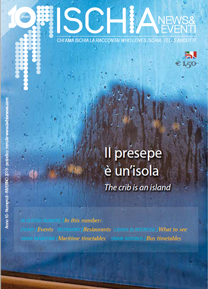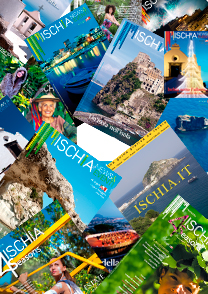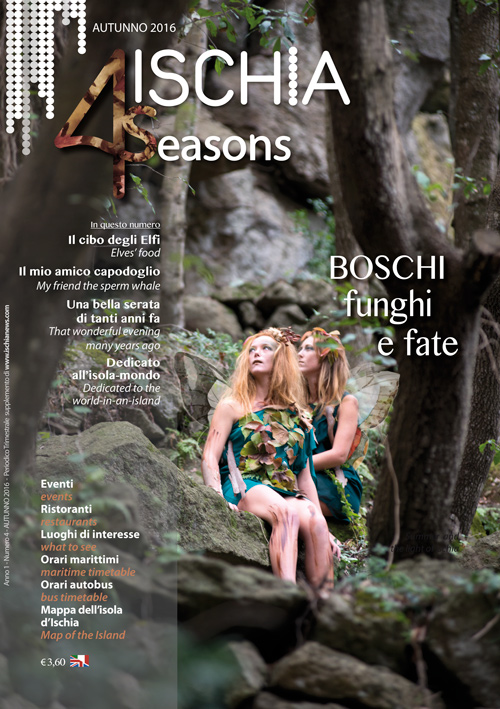From the nineteenth century to the present day
From the nineteenth century to the present day
The historical events of the XIX century can be considered as planning started with the completion of the dangers caused by the Saracens. Following the political events which brought about the depopulation of the "Castle" and the consequent transfer of the island all the privileges and prerogatives, the Borgo di Celso took the official name of Ischia.
With the transformation of Lake of Villa dei Bagni in the center of the same name became the highlight of the island’s commercial imposing, soon, the growing increase in traffic, as the true lung of economic island and consequently forum for public offices. At the same time it was not with the expansion of the center of Campagnano, the spread of small residential areas along the slopes of the homonymous hill, in the countryside between the Arso and Montagnone.
From the Renaissance to the eighteenth century
From the Renaissance to the eighteenth century
From the Romans to the Middle Ages
From the Romans to the Middle Ages
The most important document for the planning history of the island in the sixteenth century is the Cartaro map (1586), where despite the summary of the incision, Ischia is defined in its essential parts.
Done in attached to the text of Giulo Jasolino "De Remedi Naturali", dedicated to spa treatments of Ischia, the paper proposes a systematic illustration of the weather situation: the printer, in fact, although intended to highlight, exaggerating the size for this purpose, the places rich in sources and connections between them, ensured by a complex network of public roads, many of which are still, even today, their original route, not to omit ~ to represent the complex topography and settlements. The incision has documentary value, "because it offers a toponymic panorama completely renovated: to the East is reported “Ischia civitas”, a common name that links both the main town on the rock of the castle and the thick area that extends on the opposite coast .
From the origins to the first century BC
From the origins to the first century BC.
The Euboeans settlers, Chalcis and Eritreans, landed in the first half of the eighth century, settled northwest on the height of Mount Vico of the island, surrounded on three sides by the sea and connected to it by a wild access, location of the optimal conditions for a settlement to which was given the name Pithecusa.
In addition to reasons of defense, the choice had to be determined by the existence of two harbors landing at the base of the promontory which made easier the maritime activities and business of the new colony.
More than likely it appears, therefore, that Pithecusa, at least in the first half of its foundation, has assumed the role of maritime and commercial emporium. This, however, should not ascribe the absence, in the island of earlier settlements: the same town of Monte Vico, in fact, had been continuously inhabited from the Bronze Age. Fragments of Mycenaean pottery, dating from the fifteenth and fourteenth centuries, found in the coastal strip between Porto d'Ischiaand Casamicciola precisely on the hill of Castiglione, feel, indeed, pre-existing links with the Aegean world.
The topography of Pithecusa is configured with: downstream from the headland to the north-east, the harbor and a small inhabited build up area (now Lacco) on the height of the Ascending City up to the Acropolis, where the presence of an archaic temple is documented by the remains of tiles and frames, at the foot of the Acropolis, in the north-west, still a harbor and the valley of S. Montano, area suitable for the location of the necropolis.
Historical notes
The island of Ischia has a very ancient story. The first evidences of residential areas on the island can be found in the area of Lacco Ameno, where in the mid-eighth century BC a Greek colony put their roots.
The characteristics of the sites responded in full to the logic and requirements of a human settlement.
The promontory of Monte Vico, on three sides overlooking the sea, became the acropolis, the two bays “under Varuli” and "San Montano" respectively from the commercial port and functioned as a shelter for vessels in case of attack from the land; the plain of Santa Restituta allowed the productive activity of the small village, also located at Arbusto, Mezzavia and Mazzola, and finally the valley of San Montano received the necropolis. It had to be a colony of some importance, judging from the richness of the finds. At Monte Vico there are traces of Hellenic walls, temple blocks, remains of walls and dry kilns, ceramics, metals, various fragments, indicating an intense commercial activity.
Phitecusa was certainly founded by the Greeks and specifically by the Eubei, but it was also frequented by different populations, as demonstrated by the many objects found, not only of Greek workmanship. According to many scholars, the citadel of Phitecusa was a sort of free port used for trade from the eastern markets, by artisans from Syria, Egypt, Apulia, Calabria.
Dall'Ottocento a oggi
Dal Rinascimento al Settecento
Dai Romani al Medioevo
Dalle origini al I sec a.C.









